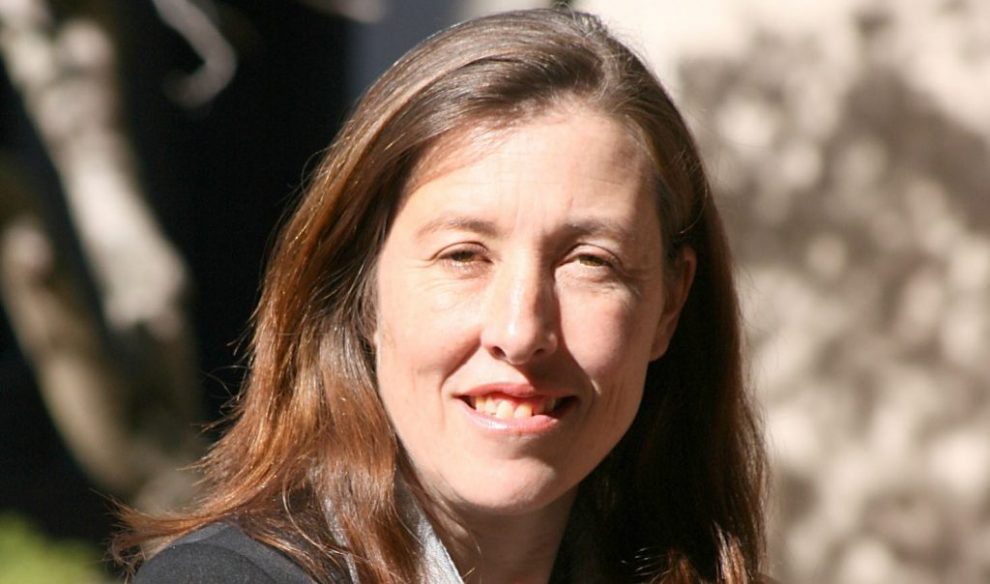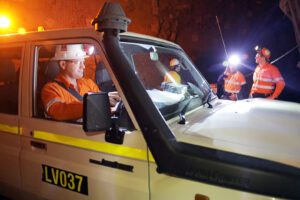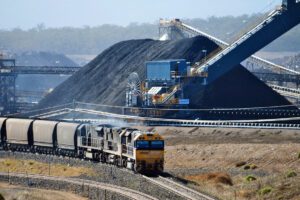Queensland’s newest Commissioner for Mine Safety and Health is no stranger to mining, with more than a decade of hands-on industry experience. Kate du Preez spoke to AMSJ in April 2018 and outlined her vision for safer and healthier workplaces in Queensland.
Can you tell us about your previous experience in the mining/regulatory sectors?
I bring more than 16 years of experience in the mining industry, including operational mining. I have worked across Africa with Anglo American’s DeBeers division, and energy and chemicals company Sasol as well as more recently in Australia with mining consultancy Minserve. I hold a Bachelor of Science in Mining Engineering and was the first woman in South Africa to obtain a South African Mines Managers Certificate of Competency in coal mining.
How have you settled in your new role?
I have started my role during a very challenging but exciting period in the Queensland mining industry, being the first independent Commissioner for Mine Safety and Health. This role has, so far, allowed me to work with a diverse range of people across many skill sets in a dynamic environment. My aim is to maintain and improve the good work already done by my predecessors through consultation and ensuring all stakeholders’ recommendations are considered; through knowledge sharing and continuous improvement across all mining operations.
What are some of your current challenges in this role?
Following confirmed cases of coal workers’ pneumoconiosis (CWP), government agencies, unions and industry are all working together to implement key actions to tackle this disease. However, with the Queensland Parliamentary select committee inquiry on CWP and the focus on implementing interim and permanent measures, scheduling time to visit mine sites in order to develop relationships with industry and workers on-site becomes difficult.
What are you hoping to achieve, especially for women in mining?
As the first female to be appointed to the role, I am happy to see more women contributing to the resource sector; but ultimately what matters is that my experience, qualification and skills made me a successful candidate. The more women who are seen contributing to the industry, the more opportunities they will promote for future generations of females. I have yet to hear a little girl say she wants to be a mining engineer when she grows up.
In regards to women in mining, do you think there is enough diversity in the industry?
In the past, legislation meant that women were technically not permitted to work underground. However, over the years, this sentiment has changed. Today you can go to a mine site and witness women performing roles not considered traditional for women like mine managers, supervisors, drillers and plant operators. Women have the same skills and abilities as male colleagues. Sometimes women can also offer a different perspective that can add additional value.
Queensland experienced its first fatality-free year in the state’s mining history. What are your thoughts on this great achievement, and how do you think it happened?
This is the first time this achievement has occurred in Queensland since mining fatality records have been kept, going back to the year 1877. This outcome is a testament to the good work done by government, unions, employees and workers in applying risk management processes – striking a balance between prescriptive regulation and risk management. While this achievement is something to be celebrated, Queensland has already had fatalities in the 2016-17 year, as well as a number of serious accidents and high potential incidents. The lost time injury frequency rate across mine sites in Queensland has decreased since 2011. This has been achieved in many mines due to changes in the nature of work, and as a result of sustained improvements in achieving a safe and healthy workplace. However, the evolving nature of mining is resulting in new and re-emerging hazards, which led to a plateau in the lost time injury frequency rate. The challenge is to remove the plateau effect.
Despite safety in the mining industry moving in leaps and bounds, black lung has re-emerged. What do you think was the problem? Where did we go wrong?
The independent review done into Coal Workers’ Pneumoconiosis (CWP) by Monash University in conjunction with the University of Illinois produced a very thorough report on the health scheme, identifying and highlighting deficiencies in just about all aspects of the medical screening program. Early detection and intervention is essential and, therefore, an effective screening program is critical to protecting the workforce. The government has accepted all of the review’s recommendations and commenced work on implementing them.
A Parliamentary Select Committee is currently examining CWP and how the current situation occurred. The Select Committee was due to report to parliament on 12 April 2017. To succeed in stamping out dust-related lung disease, not just CWP but silicosis, asbestosis and disease resulting from diesel particulates, there needs to be sustained action and vigilance through tripartite collaboration between unions, industry and government. Achieving the objective of zero-harm will require all sectors to work together.
An example of this collaborative approach has been the work done through the , which features union, industry and government representatives. Working collaboratively, the advisory committee endorsed amendments to the Coal Mining Safety and Health Regulation 2001 as well as the Queensland Mines Inspectorate to develop recognised standards for monitoring and control of respirable dust in coal mines. These changes came into effect on 1 January 2017.
In conjunction with these changes, the Advisory Committee has established pre-requisite competencies for qualifying persons to perform tasks under the regulation. This will ensure persons undertaking dust sampling in coal mines have the necessary competencies.
Our last edition of the magazine was a special BLUE edition aimed at raising awareness of mental health in the mining industry. The issue is particularly prevalent with fly-in fly-out (FIFO) workers on isolated sites. Is the government doing anything to address the rising number of suicides among FIFO workers?
In addition to broader industry and government initiatives and programs related to community mental health and wellbeing, the intention is the Strong and Sustainable Resource Communities Bill, introduced into Queensland Parliament back in November 2016, will further support the health and wellbeing of resource workers and communities.
The Bill proposes that a Social Impact Assessment (SIA) for each resource project must provide specific plans for worker health and community wellbeing. SIA will assess potential impacts of a project on the mental and physical health of all resource workers, including any proposed FIFO workforce. Mining companies will be required to provide the Coordinator-General with a workforce management plan that addresses any potential impacts identified.
It should be noted the FIFO parliamentary inquiry report stated the committee did not receive any evidence of suicides in Queensland resulting from the FIFO lifestyle. However, the mental health and wellbeing of resources workers and communities is a crucial factor that needs to be addressed to ensure every mine worker goes home safe and healthy every day. It is pleasing to note that resources companies are already implementing best practices from other industries to tackle this problem.
Mental health is one of my highest priorities and my office has commenced a project looking at initiatives that are in place across industry aimed at ensuring the mental health of all mine and quarry workers is maintained.
In 2015, the Inquiry into FIFO and other long-distance commuting work practices in regional Queensland report was released, with a number of recommendations for the government. How many of these have been put into place (particularly Anti-Discrimination Act amendment and providing mental health support services)?
I have been advised that, nine of the 17 recommendations have been fully or partly delivered, with the remainder being addressed through the Strong and Sustainable Resource Communities Bill.
Anything else you would like to add?
Safety and health in Queensland mines is an ongoing process and when new hazards arise, new technology is introduced or other changes occur to the work environment, they need to be addressed together by government, industry and unions.
Working relationships between these parties require long-term commitment. It is imperative that we continually challenge ourselves to find innovative ways to prevent workplace injuries, illnesses and fatalities.
Facts about the Commissioner for Mine Safety and Health | Did you Know?
- Kate du Preez is Queensland’s first female Commissioner for Mine Safety and Health, and also the first South African woman to obtain a mine manager’s Certificate of Competency in coal mining.
- She holds a Bachelor of Science in Mining Engineering
The Commissioner for Mine Safety and Health role involves:
- reporting directly to Queensland Minister for State Development and Minister for Natural Resources and Mines Dr Anthony Lynham on all mine safety and health issues
- monitoring and reporting on the administration of mine safety and health legislation
- ensuring that the Mines Inspectorate performs as an independent regulator
- advocating safety on behalf of all Queensland mine workers
Contact the Commissioner for Mine Safety and Health here:
Phone: +61 7 3096 6528
Email: Commissioner.MSH@dnrme.qld.gov.au
Read more Mining Safety News














Add Comment